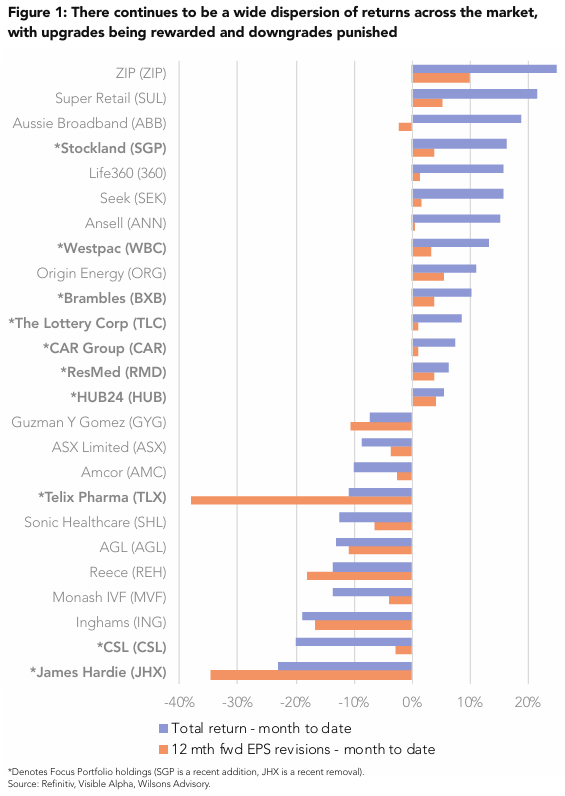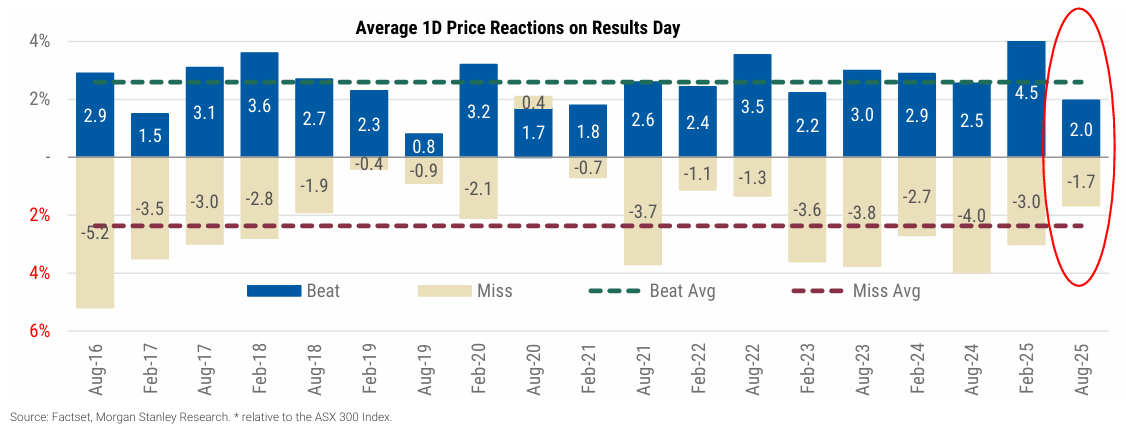3 stocks that shaped reporting season - and the lessons for investors
Every reporting season leaves scars. This one feels particularly savage.
As veteran stockbroker Marcus Padley observes: “In what world does a boring stock like Woolworths surprise the market? It is down 12.4% on results today. Domino’s Pizza is down 19%. WiseTech is down 14%. EBOS is down 14.8%.”
He likens the experience of this time of year to “walking around on a battlefield in an orange vest; you never know when you’re going to get blown up.”
The problem, Padley argues, is that companies have stopped managing expectations.
“The usual confession season has been given away, and companies now seem to be able to just dump six months’ worth of updates on results without consequence, except to the share price and shareholders. ‘Publish and be damned’ is the new corporate mantra for results," he says.
With the August 2025 reporting season nearly in the rear-view mirror, it’s worth asking: what made this one so brutal, and which results stood out as the biggest shocks - good, bad and ugly?
Winners and losers
The volatility has been extraordinary. CSL (ASX: CSL) and James Hardie (ASX: JHX) have each lost more than 20% this month alone.
On the other side of the ledger, companies like Zip (ASX: ZIP), Super Retail (ASX: SUL) and Aussie Broadband (ASX: ABB) have all been rewarded for meeting or beating expectations.
Wilsons Advisory and Stockbroking neatly distilled the big movers in the chart below.

Wilsons’ verdict: the good, the bad and the ugly
Wilsons boiled reporting season down to three large-cap stories that mattered most, each prompting a decisive portfolio move.
The good – Stockland (ASX: SGP). A rare bright spot in a brutal month. Master-planned community settlements jumped +22%, smashing guidance, and FY26 earnings guidance was upgraded. With a robust housing pipeline, Wilsons sees Stockland as one of the clearest ways to play the housing recovery.
“SGP is leveraged to the positive outlook for Australian housing. The group has a substantial residential pipeline of ~90.8k lots with an end value of $56bn, diversified across single family housing communities and, more recently, apartments," Wilsons wrote.
Stockland was added to their Focus Portfolio at a 3% weight.
- The bad – CSL (ASX: CSL). Once the market’s darling, it is now firmly in the penalty box. CSL’s FY25 result was a low-quality beat, with Behring — long regarded as the growth engine — missing badly. Even more troubling, management abandoned its margin recovery timeline.
“We also have concerns that management’s decisions to embark on major structural changes — including a cost-out/restructure and plans to spin off Seqirus — suggest the group faces an increasingly challenging outlook. As a result, we have lost conviction in both management and CSL’s medium-term earnings growth trajectory," the broker wrote.
CSL’s portfolio weighting was cut from 8% to 4% within the Wilsons strategy.
- The ugly – James Hardie (ASX: JHX) - The numbers were disastrous. EPS collapsed 59% in Q1, guidance was shredded, consensus EPS was cut by 40%, and leverage blew out above 4x.
“Given the severity of JHX’s consensus EPS downgrades has been greater than its share price decline this month, its forward PE is far from ‘cheap’ and has actually expanded since the result. JHX trades on a forward PE of ~24x, which is modestly above its five and ten year historical averages.
This is uncompelling considering the deteriorating market backdrop, the risk of a capital raise, questionable stewardship from management, and a consensus EPS CAGR of just ~5% (with risks more skewed to the downside than upside, in our view)," Wilsons said.
Wilsons removed JHX entirely from their portfolio.
Was August 2025 really that bad?
Here’s the odd part. On the numbers, this reporting season was… fine. Morgan Stanley notes that beats and misses were evenly split, with beats outperforming the market by +2% on the day and misses underperforming by -1.7%. In fact, this was relatively less volatile than previous seasons!

So why did it feel like a bloodbath? Because the names that blew up were the big, well-owned portfolio staples. When your anchors crack, it rattles confidence across the market. Yet despite the carnage, the ASX 200 has sailed past 9,000, with a cohort of smaller but mighty winners doing enough heavy lifting to push the index to fresh record highs.
Morgan Stanley’s key themes
For Morgan Stanley, five clear themes emerged from August 2025:
Banks back in the frame. CBA’s stumble was quickly forgotten as Westpac and NAB delivered stronger results and upgrades. The key question: can the majors drive aggregate market earnings higher from here?
Consumers doing just fine. Macro conditions are resilient, with jobs and wages data supportive. Policy tailwinds are also helping parts of the sector.
Insurance: global, not local. Weakness in QBE was driven more by global signals than domestic trends. La Niña risk remains a wild card.
Housing pulse building. SGP and Mirvac (ASX: MGR) results show residential construction benefiting from RBA cuts and fiscal incentives, though affordability challenges linger.
The portals return. SEEK, CAR and REA all impressed. With housing tailwinds in play, Morgan Stanley expects them to stay firmly in the “quality” bucket.
Lessons for investors
I've covered reporting seasons for nearly 15 years - this one takes the cake.
Yes, the market ground higher. But for shareholders in blue-chips like CSL and Woolworths, it felt miserable. These are companies investors buy for reliability and lower volatility. Yet both delivered anything but.
Padley’s point is hard to ignore: management teams must do a far better job of managing expectations. If Costco (NASDAQ: COST) in the U.S. can publish monthly sales, surely ASX 20 companies with their large investor relations teams can do better a better job at providing the market with a consistent flow of information to help reduce surprises.
But expectation management, it seems, is indeed dead. For investors, the only defence is to stay diversified and vigilant - accepting that parts of a portfolio will inevitably cop big hits, while others deliver big wins. The hope, as always, is that in the wash-up those swings balance into respectable performance, as has been the case in August 2025.
1 topic
3 stocks mentioned
1 contributor mentioned

